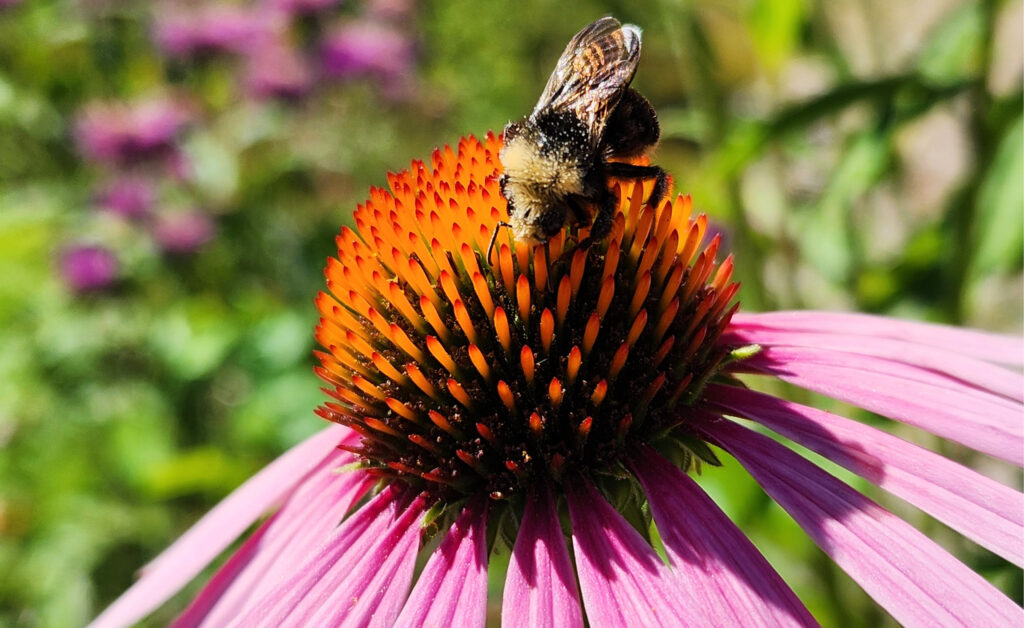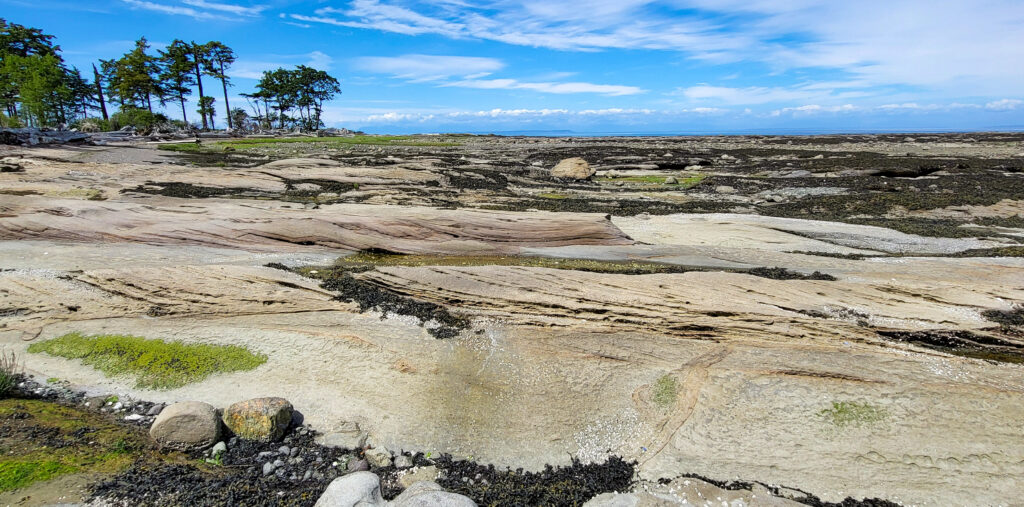by Jamila Douhaibi | photo by Scottee Giles –
If you look up “the future of food,” you will read about seaweed and insects being the main protein for the future. Past futurists have discussed food in pill form, along with issues of food security and the lack of abundance that some countries currently have. Even WebMD, a common first search for any medical ailments, weighs in on this topic. But, what does this mean for the future of food on the Peninsula – what will locals be eating right here in 20, 30, 50 years? I reached out to a few local food producers to find out their thoughts on pollination, seaweed and farming in the future.
WebMD includes quotes from doctors and organization founders who discuss the issue with our low-cost, high-calorie food options, which have led to obesity in people along with an unhealthy planet. As the population continues to increase, the need for more healthy, sustainable food will also increase. Those who provided input on the website say that farming is more sustainable now than it was previously, but question whether the change is happening quickly enough.
Lindsay Dault, of Country Bee Honey Farm in Saanichton, believes that we haven’t done enough for our important pollinators. She has been beekeeping for over 15 years and has noticed a definite shift. She says that in 30 years we will likely be “pollinating by hand or some magical bee robot rather than relying on actual bees to do the job.” Even if bee populations didn’t decline, Lindsay says that beekeeping will become financially unsustainable for farmers and families in the future. But, it’s more that the immensely negative effect from pesticides and fungicides used in agriculture has caused, and will continue to cause, long-term issues to hives and in turn the important food that they pollinate.
So, what can be done? Vertical farming, precision agriculture, cutting food waste through policy and technology, alternative proteins and better food packaging are all indicated as important solutions.
Cascadia Seaweed is one Sidney-based business providing solutions for food production and agriculture. Originally cultivating seaweed for human consumption, Cascadia has pivoted to address food security in a larger way.
Manager of Communications, Erin Bremner-Mitchell, says: “The power of seaweed gives me hope for the future. We cultivate a local crop in the ocean, which produces oxygen, captures carbon, mitigates acidification and provides habitat for marine life. We then harvest what we have grown and use that as an input to help plants grow while avoiding harmful greenhouse gases that would have otherwise been emitted from synthetic fertilizers. It’s a beautiful, nature-inspired solution to a problem that affects each and every one of us.”
The CBC agrees that pivoting to smarter farming and different technology is the way to address food security. In April, a vertical farm opened in Pitt Meadows. Rather than traditional outdoor landscape farming, vertical farming takes place inside, where stacked shelves grow lettuce and other crops. This new facility is “hands-free,” meaning that everything from seeding to watering to harvesting is automated. The Pitt Meadows facility grows non-GMO, pesticide free greens with the stated ability that they can do this faster, and with less water, than the traditional method.
The Global Alliance for the Future of Food says that climate change, the pandemic and increasing hunger work against the already fragile food systems, but that there may be ways to transform our relationship with food to make it more resilient and inclusive through regenerative agriculture, collaboration and real action towards change.
Garrett Simon from Farm or Die, located on Glamorgan Road, says: “we want to demonstrate the power of small-scale farming and community-supported agriculture to inspire a new generation of farmers focused on land stewardship, quality growing, sustainability and community.” Farm or Die’s mission is to connect their customers with quality local food that has never travelled by boat, plane or truck. “We grow food in the community for the community, harvesting food that is properly ripened, flavourful and appropriate to our growing zone.”
At Farm or Die, they practise regenerative agriculture, which includes permanent raised beds, deep mulching and minimal tilling of the land. They believe that “farmers share a crucial responsibility in preserving and protecting our agricultural land,” and that it is each farmer’s duty “as stewards of the land to protect and build arable soil for future generations.”
With all of these different viewpoints and suggestions, our food consumption in the future isn’t clear. Sustainable and alternative farming and food practices are continually being developed and evolving. So, what do you think the future of food will look like?




